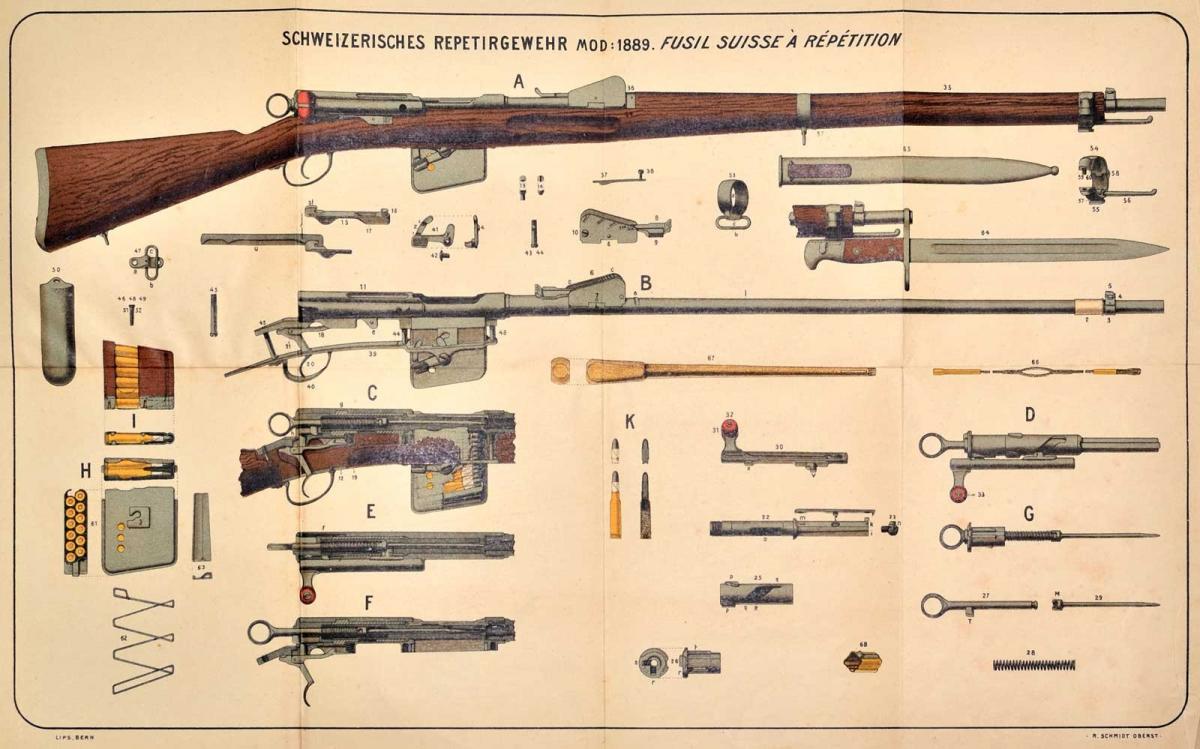
Rudolf Schmidt, Director of the Waffenfabrik Bern together with Eduard Rubin, Director of the Munitionsfabrik Thun, designed the 7,5 mm Gewehrpatrone Modell 1890. Before that, Rubin had already designed various experimental cartridges for the Swiss military, but it was the progress made in the design of smokeless propellants that allowed Rubin to perfect his designs up to the adoption of the GP11 cartridge by the Swiss Federal Council on 10 January 1913. Original M90 cartridges had paper patched lead bullets to prevent fouling, as well as lead, steel capped, paper patched bullets. Until 1892 cartridges were manufactured at Polte in Magdeburg as can be seen below. In the period to 1893, Polte supplied some 5 million rounds after which production moved to the Thun factory.
Cartridges were manufactured according to BRB, or Bundesratsbeschluss (Government Order), with orders as follows:
BRB v. 1/7/1890. Lead with CN steel cap or paper patched lead to prevent fouling. 2 hole Berdan primer. Tombak (Brass type alloy with high Cu content and between 5% – 20% Zn), convex (domed) primer with 2 primer stab crimps and without headstamp. Gas pressure 2600 atü, (2600 atmospheric units of pressure = roughly 38,000psi). Pull-out resistance 35-40 kg.
1892 Headstamp in 3 segments – P (Polte) plus date (Month/Year), cartridge order supplied by Polte Magdeburg.
1893 No primer crimp. 4 part/quartered headstamp.
1901 Flat Tombak primer.
7.5 mm GP 90/03 BRB v. 6/3/1903. Same as GP 90, with the following exceptions: Primer cap changed to brass, black primer annulus, pull-out resistance 40 kg.
7.5 mm GP 90/23 Interchangeable with M90, M90/03 as well as GP11 Manufactured at Munitions Factory Thun and loaded at the Solothurn factory.
BRB v. 9/1/1923. Flat based Bullet: CNCS grooved. Neck crimp, 7 mm wax seal on neck and bullet. Brass primer cap with black primer annulus. Gas pressure 2,000 atü, (2,000 atmospheric units of pressure = roughly 29,300psi). Pull-out resistance 30 kg.














 Board dummy with two small holes drilled in case. Bullet shows the exposed lead without paper patch.
Board dummy with two small holes drilled in case. Bullet shows the exposed lead without paper patch.


BLANK LOADS – Bullet is of reddish coloured lime wood. Convex (domed) Tombak primer with 2 stab crimps.







DUMMY LOADS – CNCS bullet that was soldered to the case with a lead-acid solder and wooden distance piece. Pierced primer of tinned lead alloy. Most cases with a blackened cannelure midway on the case, but as can be seen below, there were also specimens with a small hole drilled in the case roughly 0.47” (12mm) from the base.





 T 94 A 11(Altdorf)
T 94 A 11(Altdorf)  T 93 B 6 (Berndorf)
T 93 B 6 (Berndorf)

